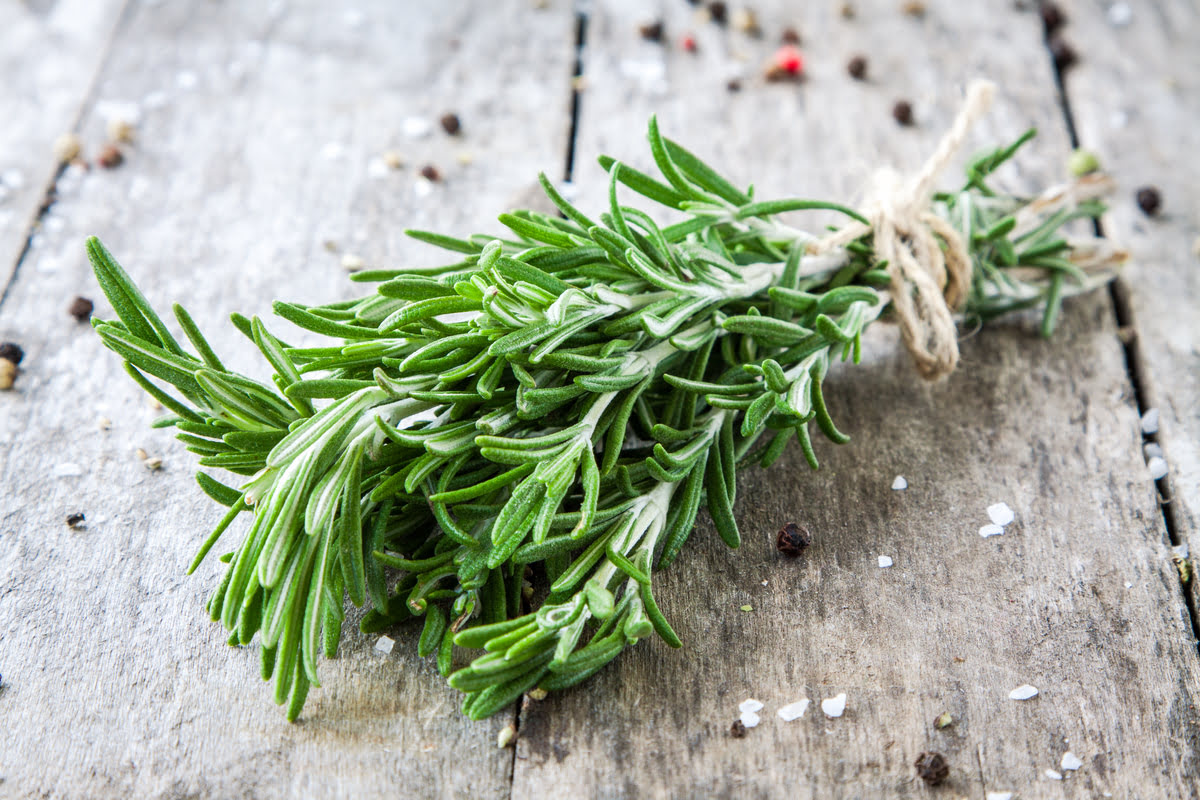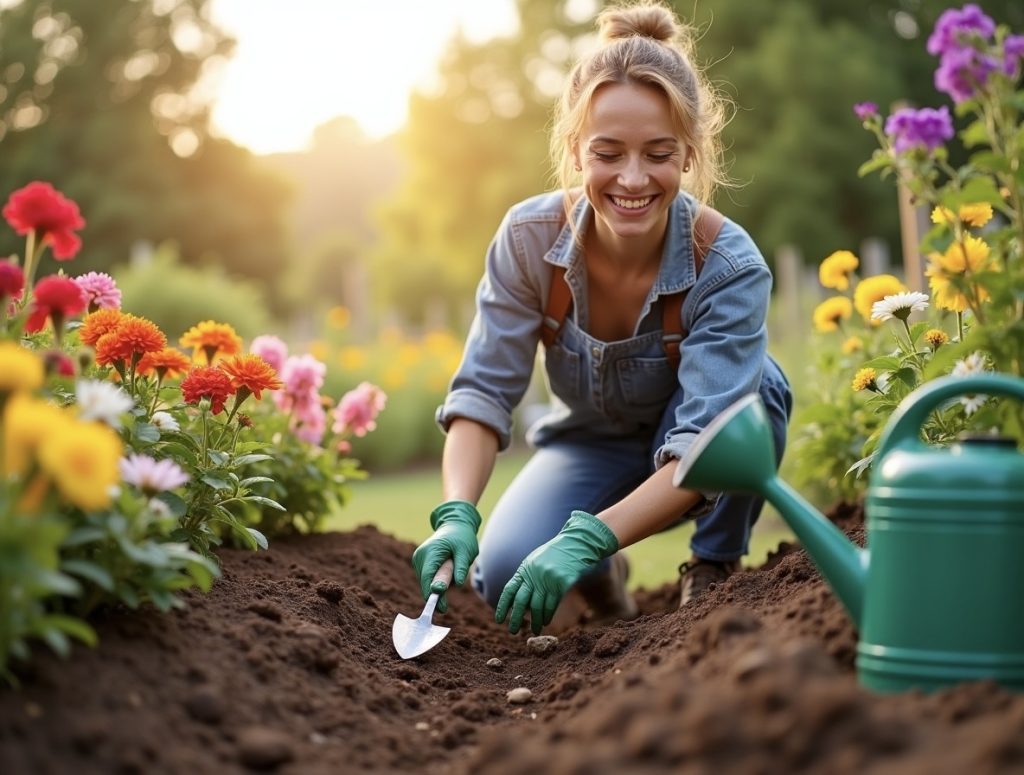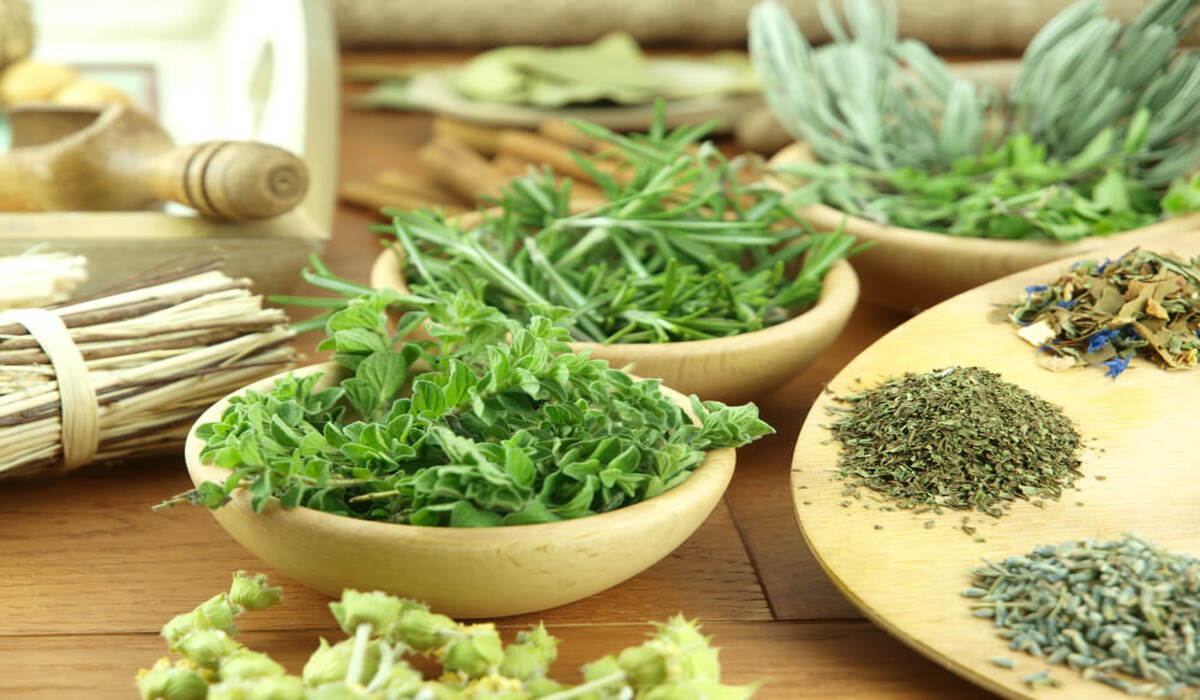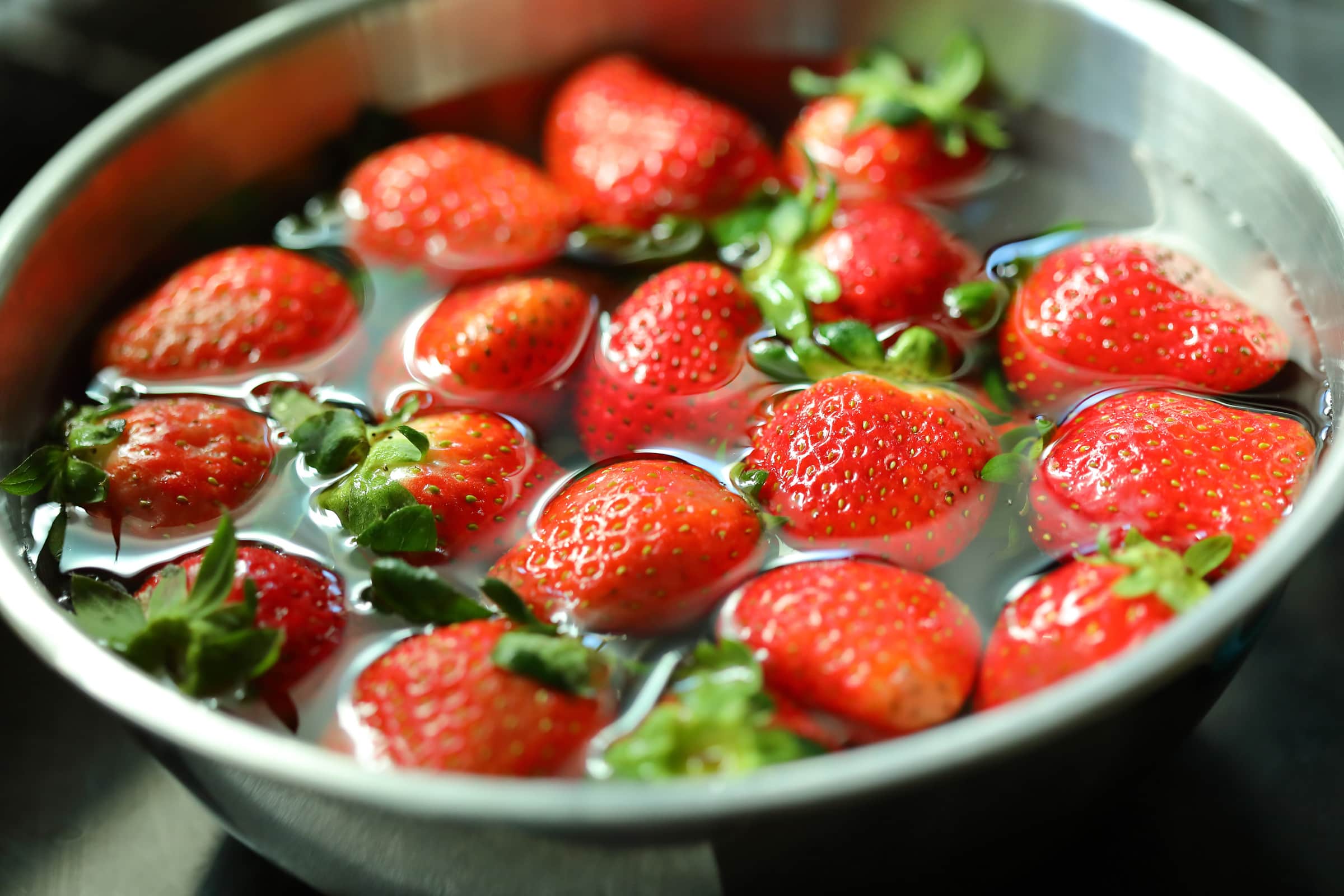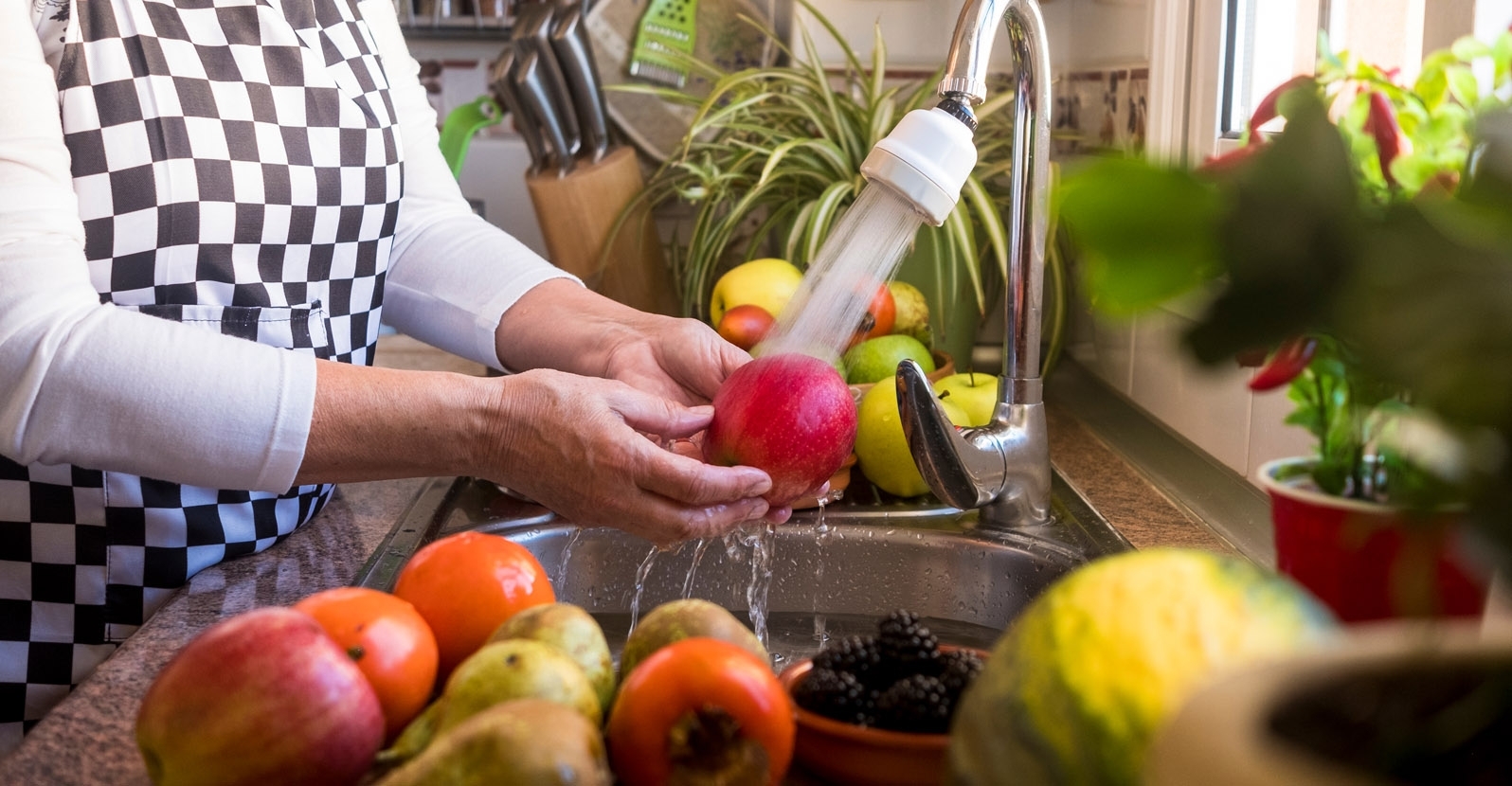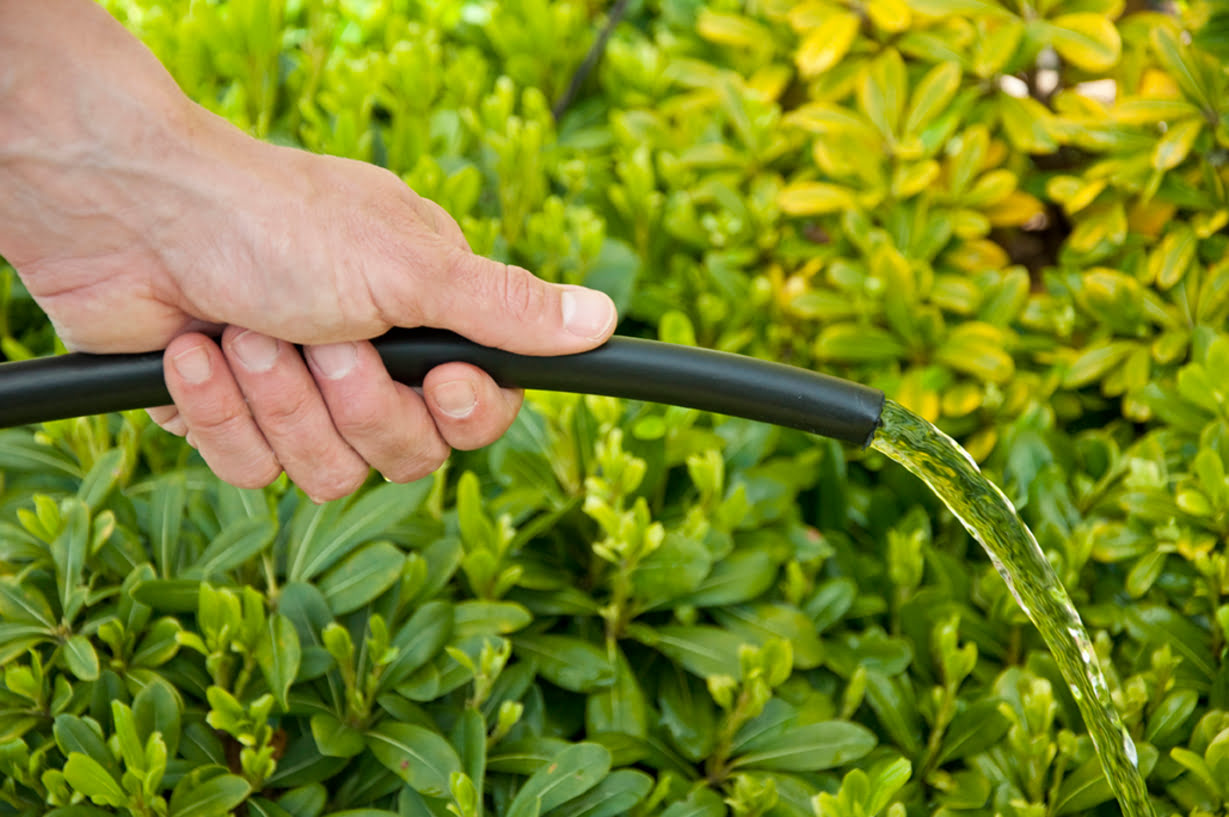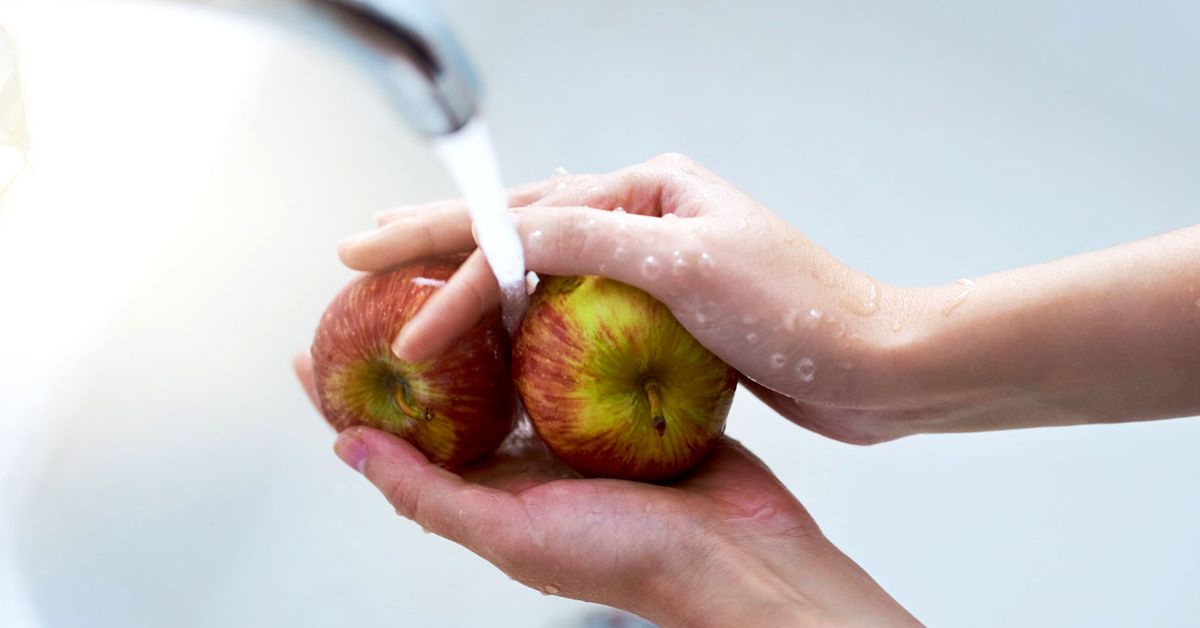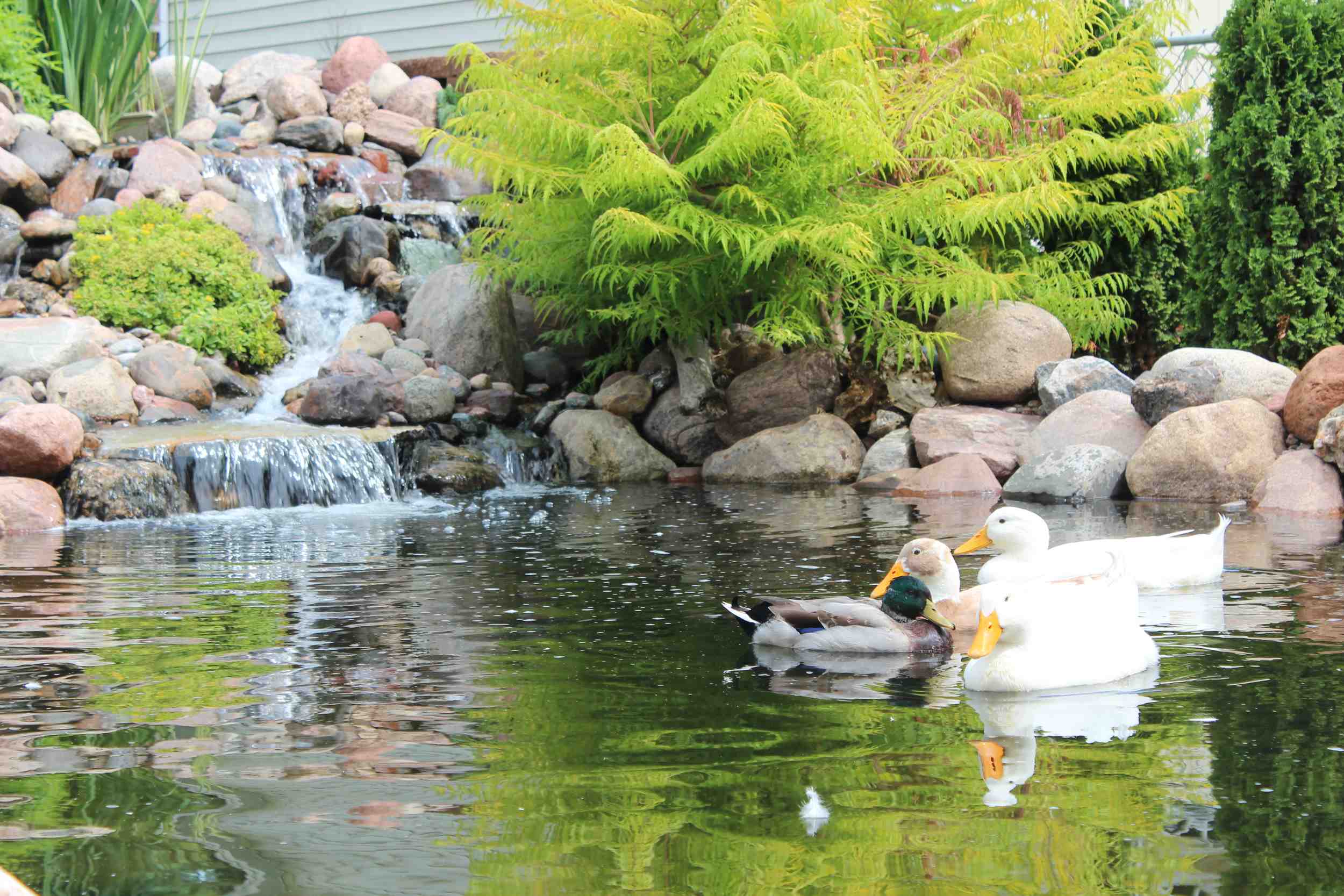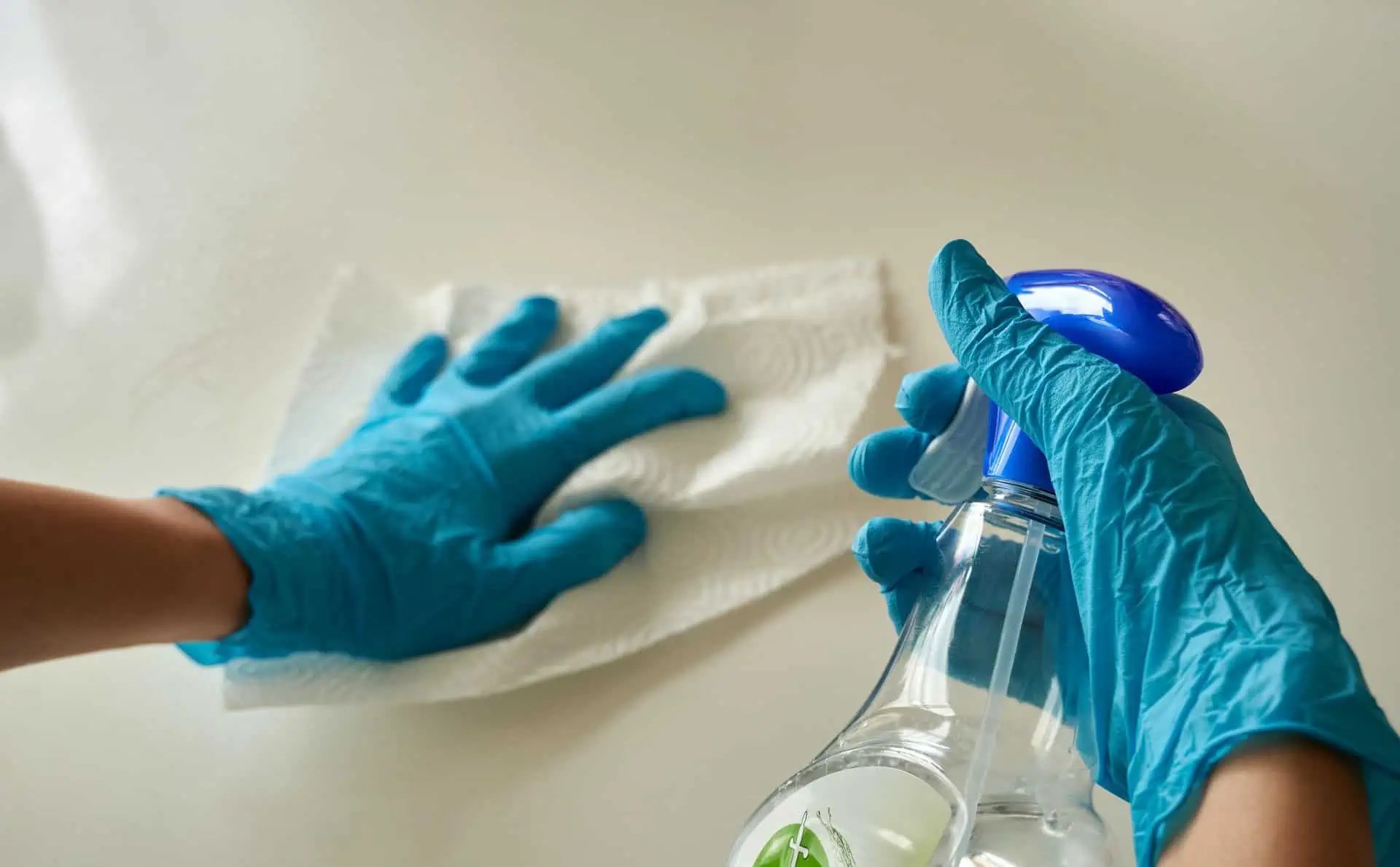Home>Gardening Tips and Tricks>Eco-Friendly Gardening>How To Clean A Greenhouse
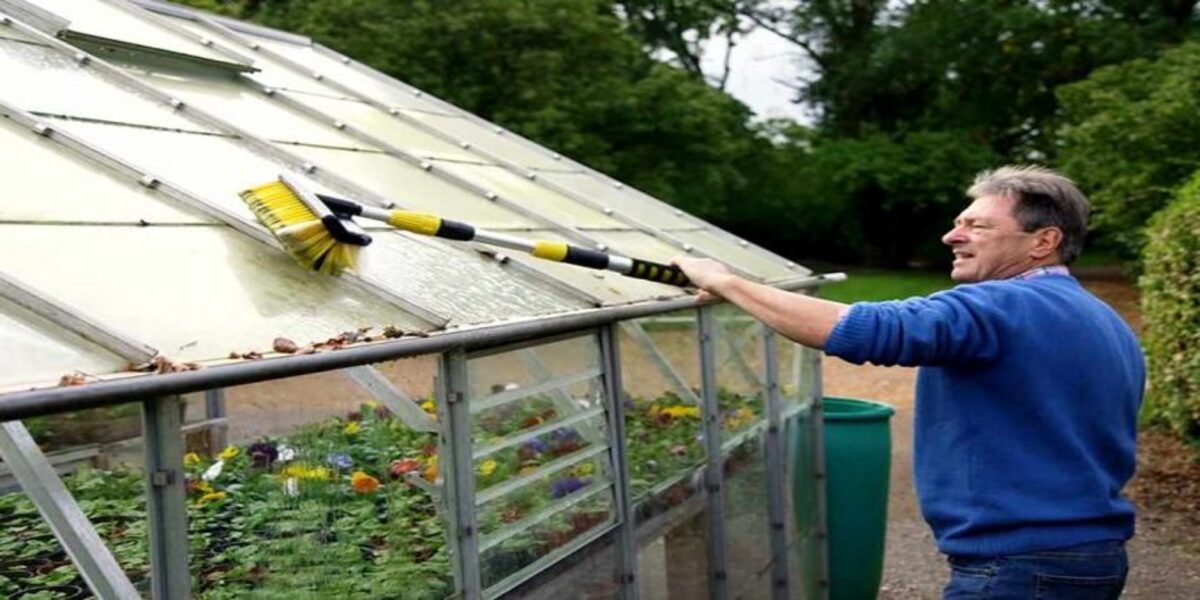

Eco-Friendly Gardening
How To Clean A Greenhouse
Modified: February 9, 2024
Learn how to clean your greenhouse using eco-friendly gardening methods. Keep your plants healthy and your conscience clear with these green cleaning tips.
(Many of the links in this article redirect to a specific reviewed product. Your purchase of these products through affiliate links helps to generate commission for Chicagolandgardening.com, at no extra cost. Learn more)
Table of Contents
Introduction
Welcome to the world of eco-friendly gardening! As more and more people become conscious of their environmental impact, eco-friendly gardening has gained popularity as a sustainable and responsible way to cultivate plants. One important aspect of maintaining an eco-friendly garden is ensuring the cleanliness and health of your greenhouse. A clean greenhouse not only promotes better plant growth, but it also helps to prevent the spread of diseases and pests.
In this article, we will guide you through the process of effectively cleaning your greenhouse. From gathering necessary supplies to disinfecting surfaces and removing pests, we will provide you with step-by-step instructions to ensure your greenhouse is sparkling clean and ready for planting. By following these eco-friendly cleaning methods, you can create a healthy and sustainable environment for your plants to thrive.
Cleaning a greenhouse may seem like a daunting task, but with a systematic approach and the right tools, it can be a rewarding and satisfying experience. Not only will you be able to enjoy the fruits of your labor in a clean and organized space, but you will also be contributing to a greener planet by adopting eco-friendly gardening practices.
So, let’s roll up our sleeves and delve into the world of cleaning and maintaining a greenhouse the eco-friendly way. From removing debris and plant materials to disinfecting surfaces and organizing equipment, we’ve got you covered. Read on to discover the secrets of keeping your greenhouse in top shape while minimizing your impact on the environment.
Gathering the necessary supplies
Before you begin cleaning your greenhouse, it’s important to gather all the necessary supplies. Having everything prepared in advance will make the cleaning process more efficient.
Here are the essential supplies you will need:
- Broom or brush: A broom with stiff bristles or a brush will be useful for sweeping the greenhouse floor and removing loose debris.
- Gloves and protective clothing: It’s important to protect your hands and skin while cleaning. Wear gloves and appropriate clothing to prevent any injuries or exposure to cleaning solutions.
- Bucket: A bucket will come in handy for mixing cleaning solutions and carrying water.
- Sponge or cloth: Use a soft sponge or cloth for cleaning surfaces without scratching or damaging them.
- Scrub brush: A scrub brush with medium bristles can be used for cleaning stubborn stains or dirt on surfaces.
- Cleaning solution: Choose an eco-friendly cleaning solution that is safe for your plants and the environment. Avoid using harsh chemicals that can harm both your plants and the ecosystem.
- Vinegar: Vinegar is a natural and effective cleaning agent that can be used for disinfecting and removing stains from surfaces.
- Bleach (optional): If your greenhouse has been affected by diseases or pests, you may choose to use bleach as a disinfectant. However, use it sparingly and follow the manufacturer’s instructions.
- Watering can or hose: For rinsing surfaces and ensuring thorough cleaning, a watering can or hose with a spray nozzle can be helpful.
- Trash bags or bins: Prepare bags or bins to collect and dispose of any debris or plant materials you remove during the cleaning process.
Once you have gathered all the necessary supplies, you are ready to move on to the next step: removing debris and plant materials from your greenhouse.
Removing debris and plant materials
Now that you have gathered your supplies, it’s time to start cleaning your greenhouse by removing any debris and plant materials that may have accumulated over time. This step is crucial because it helps create a clean and clutter-free environment for your plants to thrive.
Here’s how you can effectively remove debris and plant materials from your greenhouse:
- Sweep the floor: Begin by sweeping the greenhouse floor using a broom or brush. Make sure to reach all corners and crevices, as debris tends to accumulate in these areas. Sweep the debris into a pile and collect it in a trash bag or bin for disposal.
- Clear the pathways: If your greenhouse has pathways or walkways, clear them of any plant materials, fallen leaves, or dirt. Use a broom or brush to remove any debris, ensuring that the pathways are clean and accessible.
- Remove dead or decaying plants: Identify any dead or decaying plants in your greenhouse and remove them. These can serve as breeding grounds for pests and diseases, so it’s crucial to get rid of them. Dispose of the plants in a compost bin or trash bag, depending on their condition.
- Prune and trim: Inspect your plants and trim any dead or yellowing leaves or branches. This not only improves the overall appearance of your plants but also reduces the risk of disease spreading. Use clean and sharp pruning shears to avoid causing damage to healthy parts of the plants.
- Clean out plant containers: If you have plant containers or pots in your greenhouse, clean them by removing any dead plants or old potting soil. Rinse the containers with water to remove any debris. Make sure to dry them thoroughly before reuse.
During the process of removing debris and plant materials, be mindful of any pests or diseases that may be present. If you notice signs of infestation or infection, it’s important to take appropriate steps to address them. We will cover pest and disease control in more detail later in the article.
Once you have cleared your greenhouse of debris and plant materials, you are ready to move on to the next step: cleaning the glazing materials.
Cleaning the glazing materials
The glazing materials of your greenhouse, such as glass or polycarbonate panels, play a vital role in allowing sunlight to enter and creating a favorable environment for your plants. Over time, these materials can become dirty due to dust, dirt, and pollutants, hindering the amount of light that reaches your plants. Cleaning the glazing materials is an essential step in maintaining a healthy and productive greenhouse.
Follow these steps to effectively clean the glazing materials of your greenhouse:
- Choose the right time: Plan to clean the glazing materials on a cloudy day or during the early morning or late evening when the sun is not directly shining on the greenhouse. This will prevent streaking or water spots on the surfaces.
- Prepare the cleaning solution: Mix a mild cleaning solution using warm water and a gentle soap or detergent. Avoid using harsh chemicals that can damage the glazing materials or harm your plants.
- Start from the top: Begin by cleaning the uppermost part of the glazing materials and work your way down. Use a soft sponge or cloth soaked in the cleaning solution to gently wipe the surfaces. Pay attention to corners and edges where dirt tends to accumulate.
- Remove stubborn stains: If you encounter stubborn stains or dirt spots, consider using a scrub brush with soft bristles. Be gentle and avoid applying excessive force that could scratch or damage the glazing materials.
- Rinse with water: After cleaning each section of the glazing materials, rinse with clean water to remove any residue from the cleaning solution. This step is crucial to ensure that no traces of soap or detergent are left behind.
- Dry the surfaces: Once you have finished cleaning and rinsing the glazing materials, use a soft, lint-free cloth or squeegee to dry the surfaces. This will prevent water spots and streaks and leave your greenhouse looking sparkling clean.
It is important to mention that cleaning the glazing materials should be done regularly to maintain optimal light transmission. Aim to clean them at least twice a year, but you may need to do it more frequently if your greenhouse is located in an area with heavy pollution or if you notice a considerable amount of dirt buildup.
With the glazing materials now cleaned and sparkling, it’s time to move on to the next step: disinfecting the interior surfaces of your greenhouse.
Disinfecting the interior surfaces
Disinfecting the interior surfaces of your greenhouse is a crucial step in maintaining a healthy and disease-free environment for your plants. Over time, pathogens, pests, and diseases can accumulate on surfaces, posing a threat to the overall health of your plants. By following proper disinfection techniques, you can minimize the risk of infections and ensure the well-being of your plants.
Here’s how you can effectively disinfect the interior surfaces of your greenhouse:
- Empty the greenhouse: Start by removing all plants, equipment, and tools from your greenhouse. This will allow better access to the surfaces and ensure thorough disinfection.
- Remove any debris: Sweep or brush away any loose debris, fallen leaves, or plant materials from the interior surfaces of your greenhouse. Dispose of these materials properly.
- Mix a disinfecting solution: Prepare a disinfecting solution using eco-friendly products such as vinegar, hydrogen peroxide, or commercial organic disinfectants. Follow the manufacturer’s instructions for dilution and usage.
- Apply the disinfecting solution: Using a sprayer or sponge, apply the disinfecting solution to all interior surfaces of your greenhouse. Pay special attention to areas that are frequently touched, such as door handles and workbenches.
- Allow the solution to sit: Let the disinfecting solution sit on the surfaces for the recommended amount of time. This will give it sufficient time to kill any pathogens or pests present.
- Rinse the surfaces: After the recommended contact time, thoroughly rinse the surfaces with clean water. This will remove any residue from the disinfecting solution.
- Dry the greenhouse: Allow the greenhouse to air dry completely before returning plants, equipment, or tools. Proper drying helps prevent the growth of mold or any remaining moisture that can contribute to disease development.
It is important to note that disinfecting your greenhouse should be done regularly, especially if you have experienced pest or disease issues. Wipe down frequently touched surfaces, such as door handles and shelves, on a more frequent basis to prevent the spread of pathogens.
By disinfecting the interior surfaces of your greenhouse, you are taking an important step towards maintaining a healthy growing environment. With the surfaces disinfected, it’s time to move on to the next step: cleaning and organizing your equipment and tools.
Cleaning and organizing equipment and tools
Keeping your gardening equipment and tools clean and organized is essential for a smooth and efficient gardening experience. Over time, tools can become dirty, rusty, and even harbor disease-causing pathogens. Cleaning and organizing your gardening equipment not only helps prolong their lifespan but also ensures that they are ready for use whenever you need them.
Follow these steps to effectively clean and organize your equipment and tools:
- Gather all your tools: Collect all your gardening equipment and tools from your greenhouse. This includes shovels, rakes, trowels, and any other implements you regularly use.
- Remove dirt and debris: Use a brush or hose to remove any dirt or debris from your tools. Pay extra attention to areas with hard-to-reach crevices or hinges.
- Sanitize with a cleaning solution: Prepare a cleaning solution using warm water and a mild detergent. Dip a sponge or cloth into the solution and thoroughly clean each tool, ensuring all surfaces are covered.
- Rinse and dry: Rinse the tools with clean water to remove any residue from the cleaning solution. Dry them thoroughly with a clean cloth to prevent rusting.
- Sharpen blades: Take a moment to inspect the blades of cutting tools, such as shears or pruners. If necessary, sharpen the blades using a sharpening stone or file to ensure they are in optimal condition for use.
- Oil moving parts: For tools with hinges or moving parts, apply a thin layer of lubricating oil to keep them functioning smoothly.
- Organize and store: Once your tools are clean and dry, organize them in a designated area of your greenhouse. Use hooks, pegboards, or a tool rack to keep everything neatly arranged and easily accessible.
Keeping your equipment and tools clean not only improves their performance but also reduces the chance of spreading diseases between plants. Regular cleaning and maintenance will prolong the lifespan of your tools and ensure they are always ready for use.
By following these steps, you have not only cleaned and organized your gardening equipment and tools but also created a more efficient and enjoyable gardening environment. With your tools organized, it’s time to move on to the next step: removing and preventing pests and diseases in your greenhouse.
Removing pests and disease
Pests and diseases can wreak havoc on your greenhouse and compromise the health of your plants. Taking proactive measures to remove and prevent pests and diseases is crucial in maintaining a thriving garden. Here are steps to effectively control pests and diseases in your greenhouse:
- Identify the problem: Regularly inspect your plants for signs of pests or diseases such as yellowing leaves, holes in leaves, discoloration, or wilting. Identify the specific pest or disease affecting your plants to determine the appropriate removal and prevention methods.
- Remove infested plants: If you discover plants that are severely infested or diseased, remove them immediately from the greenhouse to prevent the spread of pests or diseases to other plants. Bag and dispose of the affected plants safely, away from your garden area.
- Isolate affected plants: If you notice early signs of a pest infestation or disease, isolate the affected plants from healthy ones. This will prevent the problem from spreading while allowing you to treat the affected plants more effectively.
- Introduce natural predators: In the case of common greenhouse pests such as aphids, mealybugs, or spider mites, consider introducing beneficial insects like ladybugs or predatory mites. These natural predators can help control the population of harmful pests.
- Use organic pest control methods: Employ organic pest control methods such as neem oil, insecticidal soap, or horticultural oils. These products are eco-friendly and can effectively combat pests without harming your plants or the environment.
- Practise good sanitation: Regularly clean and sanitize your greenhouse to eliminate potential breeding grounds for pests and diseases. Remove fallen leaves, weeds, and any organic matter that can serve as a food source or shelter for pests.
- Monitor and prevent: Continually monitor your plants for any signs of pests or diseases. Implement preventive measures such as applying organic insecticides or fungicides as a proactive approach to minimize the risk of infestations or infections.
Remember, prevention is always better than cure. Maintaining a clean and well-organized greenhouse, practicing good sanitation, and closely monitoring your plants will help prevent pest and disease issues from occurring in the first place.
By following these steps to remove pests and diseases from your greenhouse, you are ensuring that your plants can grow in a healthy and thriving environment. Now, let’s move on to exploring ways to maintain cleanliness in your greenhouse on an ongoing basis.
Maintaining cleanliness on an ongoing basis
Once you have thoroughly cleaned and organized your greenhouse, it is important to maintain cleanliness on an ongoing basis to ensure the health and productivity of your plants. By incorporating regular maintenance tasks into your gardening routine, you can keep your greenhouse tidy and reduce the risk of pests, diseases, and other issues.
Here are some tips for maintaining cleanliness in your greenhouse:
- Regularly sweep and tidy: Schedule regular sweeping and tidying sessions to keep the greenhouse floor free from debris, fallen leaves, or plant materials. This will help prevent the accumulation of potential hiding spots for pests or diseases.
- Monitor for pests and diseases: Continuously monitor your plants for any signs of pests or diseases. Early detection allows for prompt and targeted treatment, minimizing potential outbreaks and damage to your plants.
- Practice good sanitation: Regularly clean your tools, trays, and pots to prevent the spread of pests or diseases. Disinfect surfaces as needed, especially after handling infested plants or working with soil mixtures.
- Prune and remove dead plant material: Regularly prune your plants to remove dead or yellowing leaves, as they can attract pests or harbor diseases. Promptly remove any fallen plant material from the greenhouse to prevent the build-up of potential breeding grounds for pests.
- Monitor and regulate humidity levels: High humidity can contribute to the growth of mold and the spread of diseases. Use a hygrometer to monitor humidity levels and consider using fans or ventilation to improve air circulation and reduce excessive moisture.
- Properly dispose of plant waste: Dispose of plant waste, such as trimmings or prunings, in a designated compost bin or dispose of them properly. Avoid leaving plant waste inside the greenhouse, as it can attract pests or contribute to disease development.
- Regularly clean glazing materials: Keep the glazing materials of your greenhouse clean by regularly washing them to ensure optimal sunlight penetration. Follow the previous section’s guidelines on cleaning the glazing materials to maintain their cleanliness and effectiveness.
By implementing these ongoing maintenance practices, you can create and maintain a clean and healthy environment for your plants. Regular attention to cleanliness and sanitation will help your plants grow strong, reduce the risk of pest and disease issues, and contribute to a thriving greenhouse ecosystem.
Now that you have learned how to maintain cleanliness in your greenhouse on an ongoing basis, let’s wrap up with a few concluding thoughts.
Conclusion
Cleaning and maintaining your greenhouse in an eco-friendly manner is a vital aspect of successful and sustainable gardening. By following the steps outlined in this article, you can create a clean and healthy environment for your plants to thrive while minimizing your impact on the environment.
From gathering the necessary supplies to disinfecting surfaces, removing pests and diseases, and maintaining cleanliness on an ongoing basis, each step plays a crucial role in the overall health and productivity of your greenhouse.
Remember to choose eco-friendly cleaning solutions, practice good sanitation, and regularly monitor your plants for signs of pests or diseases. Be proactive in your approach, removing any infested or diseased plants promptly, and implementing preventive measures to minimize the risks.
Additionally, maintaining cleanliness in your greenhouse is not a one-time task; it requires ongoing attention and care. Regularly sweep and tidy, monitor for pests and diseases, practice good sanitation, and keep an eye on humidity levels. These practices will help create an optimal growing environment for your plants.
By adopting eco-friendly gardening practices and maintaining a clean and organized greenhouse, you can not only enjoy the beautiful results of your gardening efforts but also contribute to a greener and healthier planet.
So, embrace the power of eco-friendly gardening, and let your greenhouse be a sanctuary for vibrant, healthy, and sustainable plant life.
